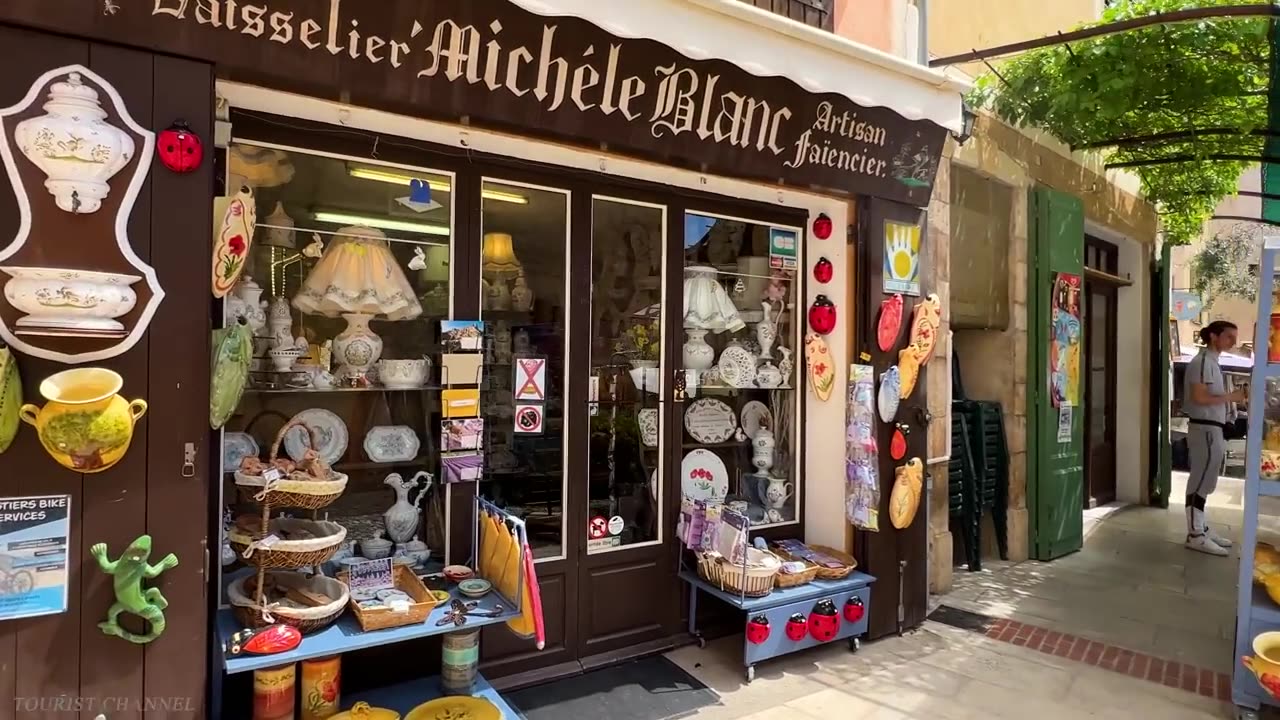Premium Only Content

"Moustiers-Sainte-Marie - Les Plus Beaux Villages de France - Art, Traditions et Architecture"
One of the most beautiful villages in France
Since 1981, Moustiers-Sainte-Marie has been ranked among the Most Beautiful Villages in France. Church, ramparts, chapels, aqueduct, fountains, alliances of water and stone, pastel tones of tiles and tufa shape a homogeneous and living architectural ensemble. The sweetness of life that emanates from it naturally encourages us to respect and value this place, to discover it and protect it. The work of the land, perpetrated for centuries, is the link between the history and the future of the village.
Authentic and alive
Today, Moustiers has about 700 inhabitants. The heart of its economy revolves around tourism and the pottery tradition. The capacity of reception in the municipality is important. In addition to 750 camping pitches and a holiday village, 130 hotel rooms in the village center or on the outskirts, around twenty gîtes and guest rooms and more than 50 furnished accommodation, it is easy to discover the local wonders beyond a furtive crossing. The various services will satisfy all desires and all budgets.
On the retail side, artists' and craftsmen's stalls rub shoulders with local services.
On the food side, around twenty restaurants satisfy gourmets and gourmets, lovers of refined gastronomy, brasseries or local cuisine.
A village anchored in the Regional Natural Park of Verdon and the Geopark of Haute-Provence.
Moustiers-Sainte-Marie is part of the Regional Natural Park of Verdon, straddling the two departments of Var and Alpes de Haute Provence, which extends over 46 municipalities and includes seven large landscaped areas. This diversity of ecosystems gives the park a rich and varied natural heritage: vultures, bats, chamois, deer and endemic flora. The Headquarters of the Verdon Regional Natural Park is located in the town of Moustiers.
www.parcduverdon.fr
Verdon Gorge
Moustiers is also located on the territory of the UNESCO Geopark of Haute-Provence. This UNESCO-listed nature reserve covers 60 towns in the Alpes de Haute-Provence department. Many natural and geological sites allow you to discover the last 300 million years of Earth's history.
www.geoparchauteprovence.com
The parish church
Classified as a historical monument in 1913, the church proudly displays its Lombard bell tower, one of the most beautiful in Provence. This square tuff tower rises twenty-two meters high divided into four floors with twin openings. Dating from the 12th century, this bell tower was one of the three moving bell towers recorded in Europe. The Romanesque nave from the same period is divided into five bays with pointed barrel vaults. The pilasters flare upwards, a fairly common phenomenon in Romanesque churches. Exterior buttress walls compensate for this movement. Three semicircular vaulted chapels, later, open onto this nave.
The mountains rock
The cliffs on which the village is built and those dominating it formed natural lines of defence, but Moustiers also protected itself behind ramparts as for many villages, built in the Middle Ages.
Pierre de Pratis, commendatory prior, ordered in 1336 the enlargement of the church; the axis of the nave was not respected and we do not know if the prior wanted to incline the choir in the direction of Jerusalem or recall the position of the head of Christ on the cross. The current altar is a fourth century sarcophagus in white marble representing the passage of the Red Sea.
-
 16:43
16:43
GritsGG
17 hours agoThey Buffed This AR & It Slaps! Warzone Loadout!
18.1K1 -
 2:05:30
2:05:30
Side Scrollers Podcast
21 hours agoEveryone Hates MrBeast + FBI Spends $140k on Pokemon + All Todays News | Side Scrollers Live
114K12 -
 11:06
11:06
The Pascal Show
15 hours ago $1.47 earned'THEY'RE GETTING DEATH THREATS!' Jake Haro's Lawyer Breaks Silence On Emmanuel Haro's Disappearance!
18.6K2 -
 LIVE
LIVE
Lofi Girl
2 years agoSynthwave Radio 🌌 - beats to chill/game to
303 watching -
 2:19:32
2:19:32
Badlands Media
1 day agoDEFCON ZERO Ep. 005: False Flags, Cyber Fronts & Global Power Plays
159K74 -
 2:35:23
2:35:23
FreshandFit
10 hours agoWhy Black Men Don't Date Black Women Debate
46.5K49 -
 2:03:42
2:03:42
Inverted World Live
14 hours agoBigfoot Corpse Coming to the NY State Fair | Ep. 94
113K27 -
 6:16:23
6:16:23
SpartakusLIVE
15 hours ago$1,000 Pistol Challenge || #1 ENTERTAINER of The EONS Eradicates BOREDOM
88.5K2 -
 2:33:37
2:33:37
TimcastIRL
12 hours agoTrump Orders Review of Smithsonian For Being Woke & Out of Control | Timcast IRL
200K100 -
 3:09:10
3:09:10
Barry Cunningham
16 hours agoPRESIDENT TRUMP HAS TAKEN THE MONSTER AWAY FROM THE LEFT! HORROR STORIES WON'T WORK ANYMORE!
86.9K85